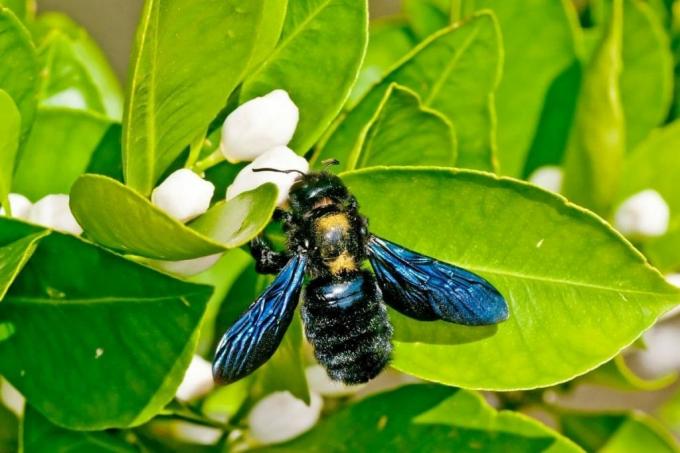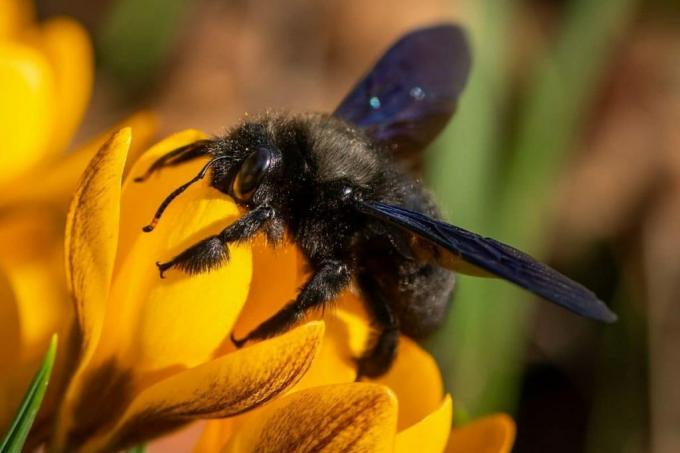
table of contents
- The black bumblebee - a wild bee
- Toxic or not?
- Stung - what now?
- frequently asked Questions
Throughout the summer you can bees Bumblebees and watch other insects foraging. Again and again there is a big black bumblebee underneath that hums loudly and threateningly. Is it poisonous?
In a nutshell
- the black bumblebee is actually a wild bee, the blue wooden bee
- the blue wooden bee is very peaceful and not aggressive towards humans
- the venom of the wood bee is just as poisonous as the venom of the honey bee
The black bumblebee - a wild bee
Big, loud and dark, this eye-catching animal is quickly labeled a black bumblebee. However, you are doing the animal an injustice. Because in truth the creature is Xylocopa violacea - the blue wooden bee. This, the largest of all native wild bee species, indeed has remarkable characteristics:

- Body size around 25 to 28 millimeters
- Broad, stocky build
- Metallic-black shiny chitin armor
- Comparatively thick, black hair on the body and legs
- Blue to purple iridescent wings
- Very loud hum in flight
Note: As with all other insects, the hum of the wooden bee is caused by the extremely fast flapping of its wings, which causes the body to vibrate. The wooden bee hums particularly loudly because its large body generates a particularly good response.
Toxic or not?
The question of whether the blue wooden bee is poisonous can, with a certain restriction, be answered with no. This no must be restricted in such a way that the animal definitely has a sting. It is also able to pierce the human skin and inject a defense secretion.
However, the toxin contained is no more or less dangerous than the honeybee's poison. In addition, the wooden bee shows itself to be very peaceful and shy. She avoids people as much as possible and only stings in absolute exceptional cases, for example when she feels threatened and no escape route is available.
Stung - what now?
If the blue wooden bee actually stings, you have to be prepared for these consequences:

- Reddening of the puncture site
- Slight swelling
- Moderate local pain around the puncture point
- It takes a few hours until the swelling subsides
- Pressure pain at the puncture usually subsides on the following day
Attention: The situation is different if you are allergic to bee venom. Then you have to react immediately, analogous to the sting of the honey bee. You may have an emergency kit with an appropriate antidote. If this is not the case, you should call the emergency doctor immediately.
frequently asked Questions
No. Like most wild bees, it lives solitary and prefers to build its nest in dead wood. Except for mating, it can therefore only be found as a single individual. The more common females even avoid each other.
In this case, the wooden bee does not prick the flower, but rather bites the calyx through the wall of the calyx at the level of the nectar. If the cup is too narrow to reach the nectar in the normal way, the bee creates its own "side entrance".
As with all other types of bees, the sting also serves as a defense. The weak toxin is completely sufficient for the defense against predators, but is completely harmless for non-allergic people.
